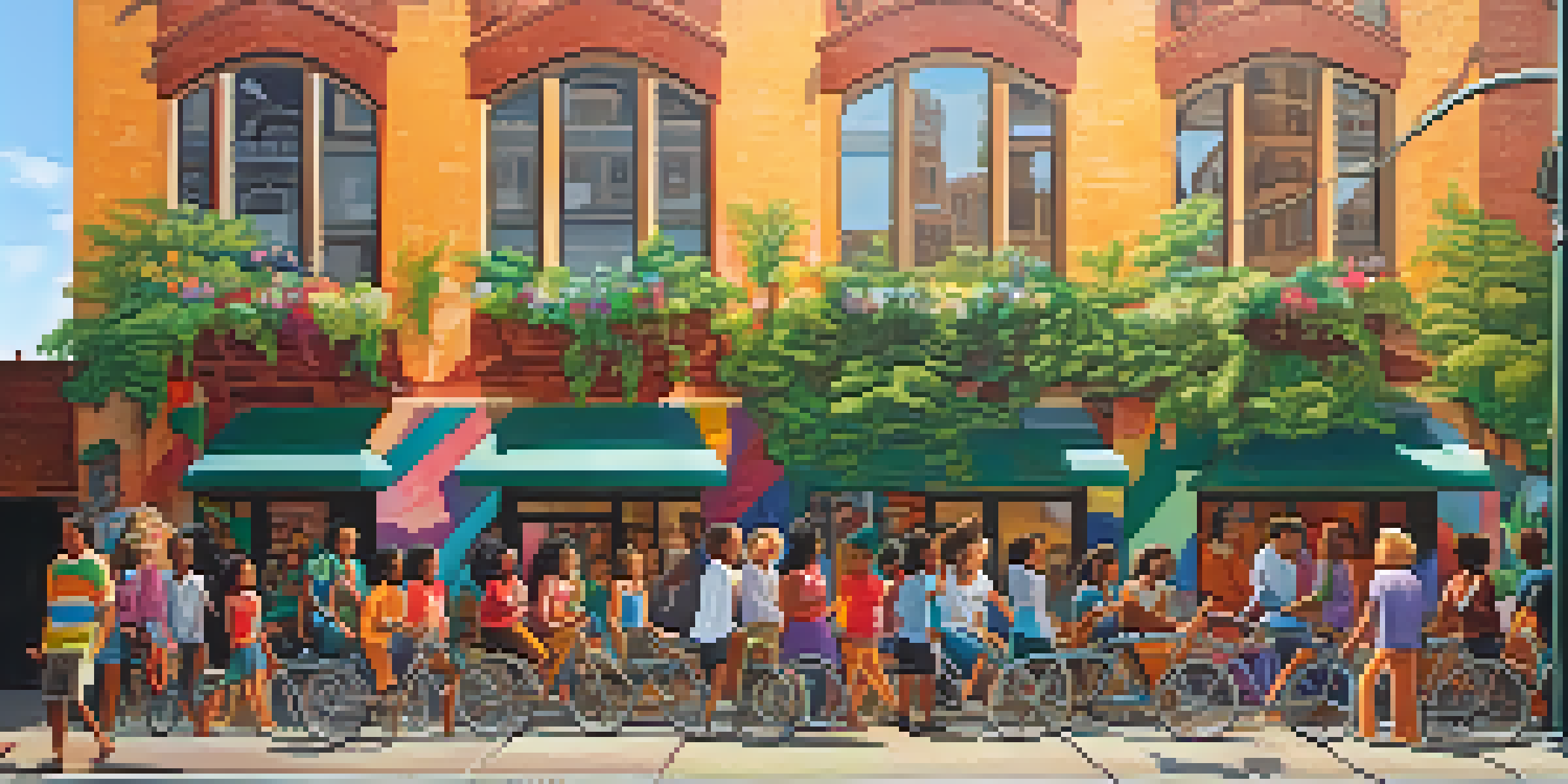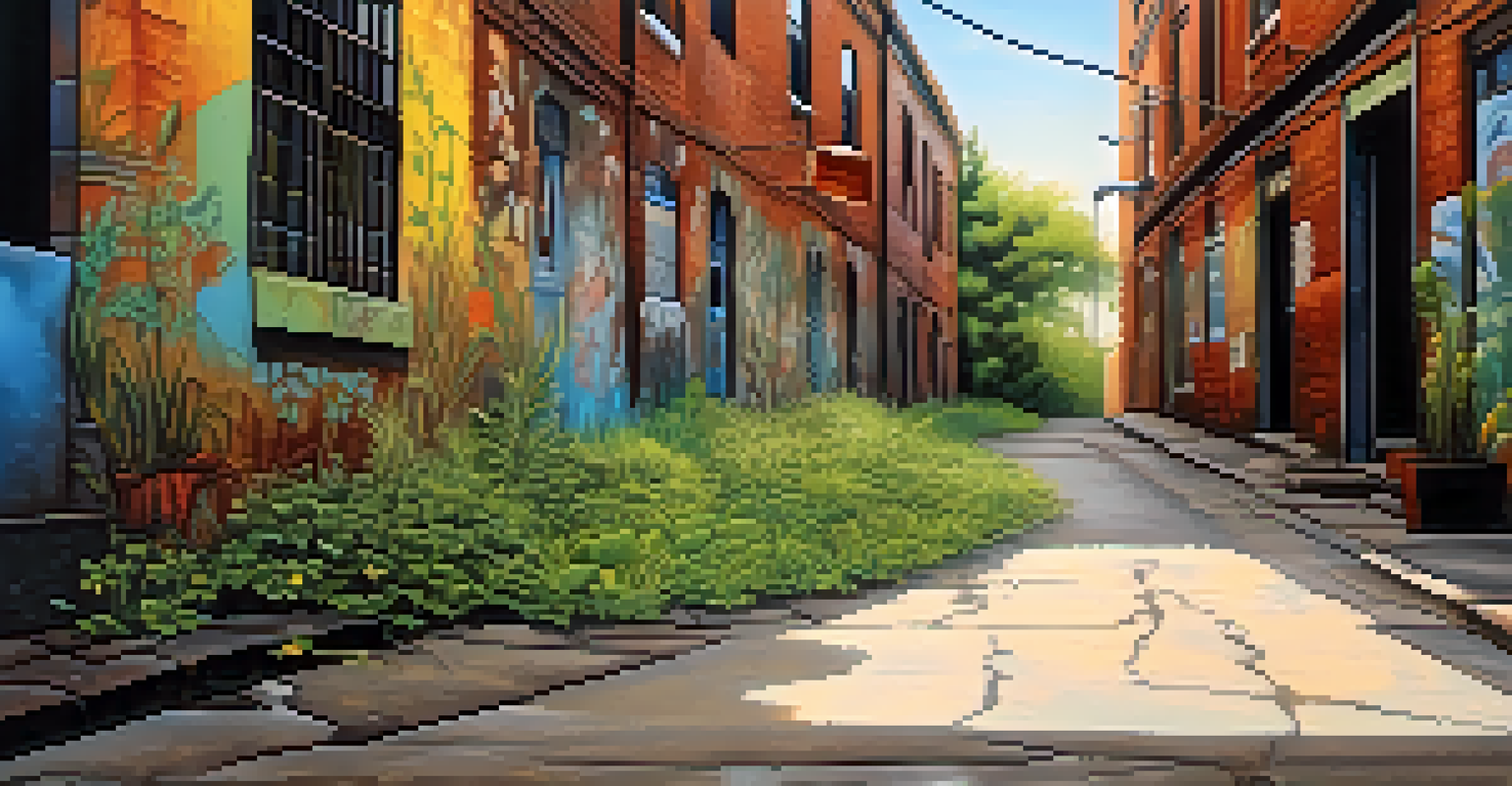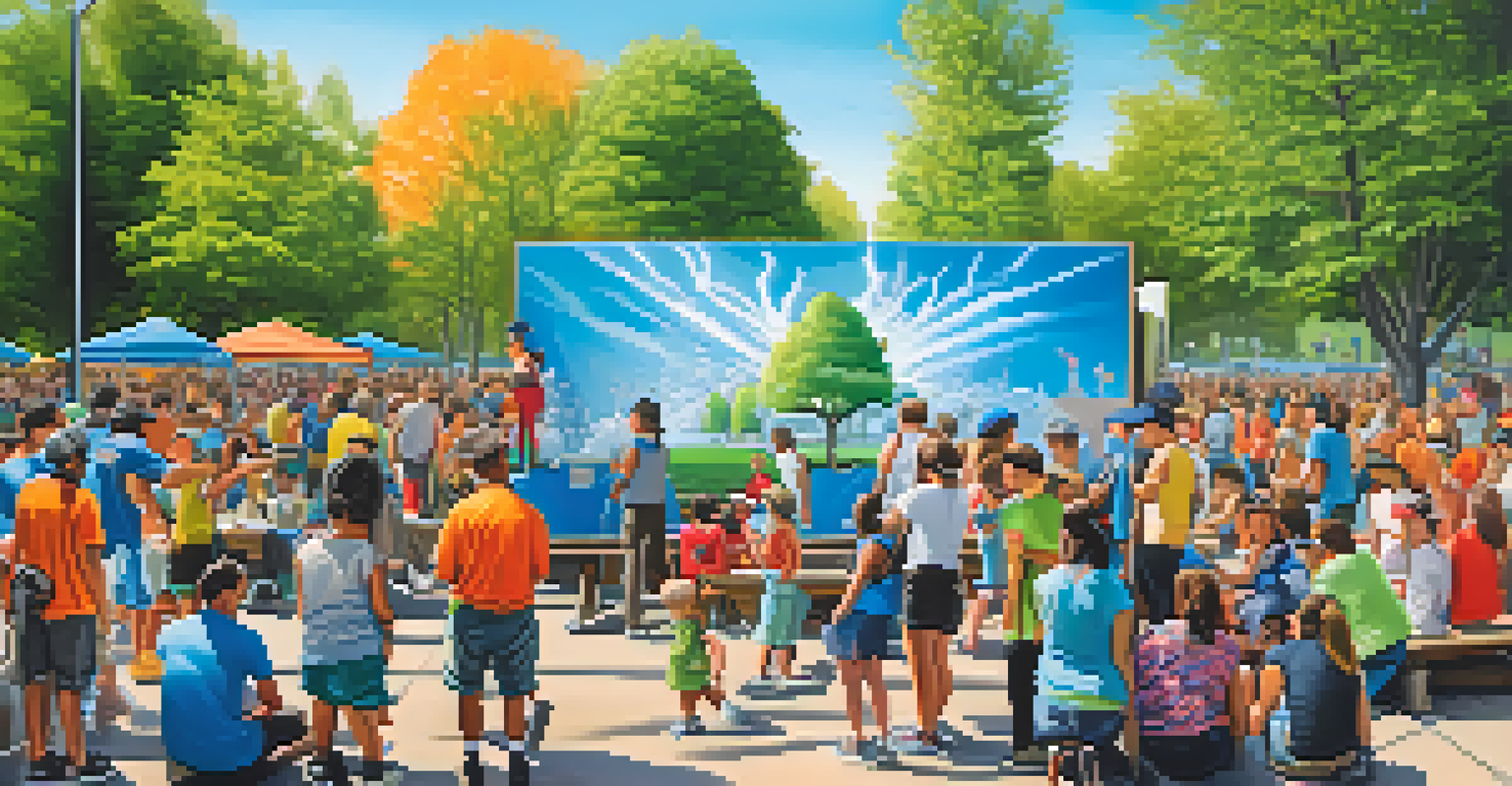Street Art: The Rise of Urban Expression and Cultural Commentary

The Origins of Street Art: A Historical Perspective
Street art has roots that stretch back to ancient civilizations, where graffiti was used as a form of communication. From the inscriptions on Roman walls to the vibrant murals of the Mexican Revolution, artists have long taken to public spaces to express their thoughts. In the late 20th century, street art began to evolve into a more defined movement, particularly with the rise of hip-hop culture.
Art should comfort the disturbed and disturb the comfortable.
In the 1980s, cities like New York became epicenters for graffiti artists, who used the urban landscape as their canvas. This era saw the birth of iconic figures such as Jean-Michel Basquiat and Keith Haring, who transformed street art into a legitimate form of expression. Their works not only challenged societal norms but also paved the way for future generations of artists.
Today, street art continues to thrive, blending historical influences with contemporary themes. It serves as a visual diary of urban life, reflecting the struggles, joys, and complexities of city dwellers. As we delve into this vibrant world, it's essential to appreciate the historical context that has shaped its evolution.
Street Art as a Form of Social Commentary
Street art is more than just visual appeal; it's a powerful tool for social commentary. Artists often use their work to address pressing issues such as inequality, racism, and environmental concerns. By placing these messages in public spaces, they invite viewers to engage with important societal conversations in a way that traditional art forms may not.

For example, the work of Banksy, a renowned street artist, often critiques consumerism and political corruption. His art provokes thought and encourages action, making viewers question their surroundings and the systems in place. Similarly, murals created in response to social movements, like Black Lives Matter, serve as a rallying cry for justice and awareness.
Street Art's Rich Historical Roots
Street art has evolved from ancient graffiti to a recognized form of expression, influenced by cultural movements and historical events.
Through vivid imagery and poignant messages, street art can spark transformative dialogue within communities. It not only highlights societal issues but also fosters a sense of unity among those who resonate with its themes. In this way, street art becomes an essential part of contemporary activism.
The Evolution of Techniques and Styles
As street art has grown, so too have the techniques and styles employed by artists. From traditional spray painting to stenciling, paste-ups, and even yarn bombing, there is a diverse array of methods that artists utilize to convey their messages. Each technique offers unique advantages, allowing for creativity and innovation in public spaces.
Street art is a form of communication that transcends language and culture, allowing people to connect through shared ideas and emotions.
For instance, the use of stencils allows artists to create intricate designs quickly, making it easier to leave their mark in a bustling urban environment. Meanwhile, paste-ups offer flexibility, enabling artists to incorporate various materials and textures into their work. As technology evolves, some artists have even begun to experiment with projection mapping, bringing their art to life in dynamic ways.
This evolution of techniques not only keeps street art fresh and exciting but also invites new artists to join the movement. With each new style, the conversation around street art expands, allowing for a richer and more diverse artistic landscape. It’s this continuous innovation that keeps street art relevant in today's ever-changing world.
The Role of Public Spaces in Street Art
Public spaces serve as the lifeblood of street art, providing artists with a canvas that is both accessible and visible. Whether it's a bustling city street, an abandoned building, or a park, these locations allow art to reach a wide audience. This accessibility is crucial, as it democratizes art, breaking down barriers that often exist in more traditional galleries.
Moreover, public spaces can transform the way we interact with our environment. A once-dreary alleyway can be revitalized through a vibrant mural, encouraging community engagement and pride. This transformation not only beautifies the urban landscape but also fosters a sense of belonging among residents.
Social Commentary Through Art
Artists use street art as a powerful medium to address social issues, sparking dialogue and community engagement.
However, the use of public spaces does raise questions about ownership and legality. While some cities embrace street art as a form of cultural expression, others view it as vandalism. Navigating these complexities adds an intriguing layer to the street art narrative, highlighting the ongoing struggle between artists and authorities.
The Intersection of Street Art and Technology
In today's digital age, technology plays a significant role in the evolution of street art. Social media platforms like Instagram and TikTok have become vital tools for artists to showcase their work and connect with audiences globally. Through these platforms, street art can gain visibility and recognition, often going viral and sparking discussions far beyond the local community.
Additionally, technology has influenced the creation process itself. Artists are now using digital design software to plan their works, allowing for precise execution and innovative designs. This fusion of art and technology not only enhances the creative process but also opens doors to new possibilities, such as augmented reality experiences that bring street art to life.
As street art continues to adapt to technological advancements, it also reflects broader cultural shifts. The ability to share and collaborate online has created a global community of artists, amplifying diverse voices and perspectives. This interconnectedness enriches the street art scene, showcasing the power of creativity in a digital world.
Challenges Faced by Street Artists
While street art can be a powerful form of expression, it also comes with its share of challenges. One of the most significant hurdles is the legal aspect, as many cities have strict laws against unauthorized graffiti. This can lead to artists facing fines, arrests, or having their work painted over, creating a constant tension between creativity and legality.
Moreover, the rise of commercialization poses another challenge. As street art gains popularity, there’s a risk of it being commodified, losing its original intent and connection to the community. This commercialization can alienate artists who wish to maintain the grassroots nature of their work, leading to a divide between street artists and the art market.
Challenges and Future Trends
Street artists face legal and commercial challenges, yet continue to innovate with trends focusing on sustainability and interactivity.
Despite these challenges, many street artists continue to persevere, finding ways to navigate the complexities of their craft. Whether through legal murals, community projects, or collaborations with local businesses, they remain committed to their message and mission. This resilience is a testament to the importance of street art in our urban landscapes.
The Future of Street Art: Trends to Watch
As we look to the future, several trends are emerging within the street art scene. One notable trend is the increasing focus on sustainability, with artists using eco-friendly materials and techniques. This shift not only addresses environmental concerns but also encourages a deeper connection between art and the natural world.
Additionally, the integration of interactive elements is becoming more prevalent. Artists are experimenting with immersive installations that invite audience participation, blurring the lines between creator and viewer. This evolution enhances the experience of street art, making it a more engaging and dynamic form of expression.

Finally, the ongoing dialogue around social justice and equality will likely continue to shape the future of street art. As artists respond to global movements and local issues, their work will remain a vital source of inspiration and commentary. The future of street art is bright, promising new voices, ideas, and forms that will further enrich our urban environments.